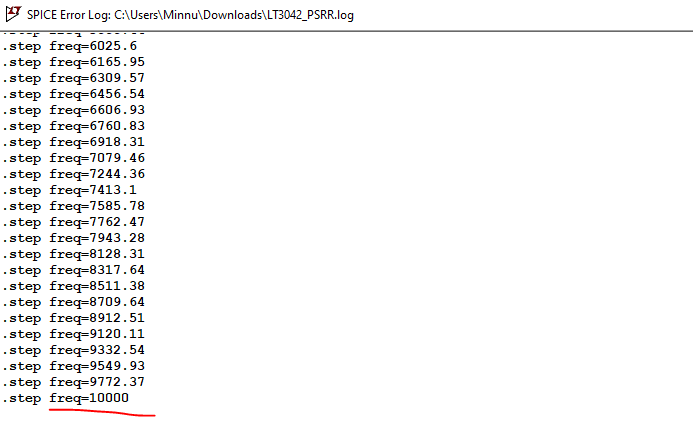I am performing PSRR analysis in LTSpice from this online tutorial. It shows PSRR analysis of LT 3042.
The thing is no matter how much I try, I only get data till 10kHz. What am I doing wrong?
P.S. Let me know, I will attach my .asc file if needed.
EDIT 1:
When I change the .tran stop time to 2 sec, it shows the initial missing data, still the range is stuck at 10kHz.







